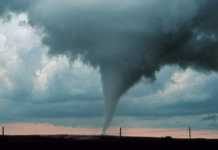Among the top Google News search results today for the term “climate change” today is a story on the climate activist website, Carbon Brief, titled “Climate change could have a ‘profound’ negative impact on child malnourishment.” The article claims climate change is likely to cause childhood nutrition, to an even greater extent than socioeconomic factors. In reality, climate change is benefiting crop production and making nutritious foods more generally available. In addition, history shows widespread hunger, malnutrition, and starvation are much more common during colder epochs of time than in warmer periods.
Carbon Brief references a study published in Environmental Research Letters (ERL), in which the authors calculate the “diet diversity” of children in 19 low- and middle-income countries. The authors correlate diet diversity with nutrition, arguing the greater diversity of diet, the better a child’s nutrition. They then correlate diet diversity with various factors including year-to-year weather changes, climate conditions, clean water availability, education, wealth, etc.
“One in three children currently suffer from malnutrition – with the majority in low- and middle-income countries and in children under the age of five,” writes Carbon Brief, summarizing the ERL study. “Although global levels of childhood malnutrition have decreased over recent decades, global undernourishment rates have risen since 2015, the new study says. This is, in part, due to climate change and extreme weather events, it adds.”
This last claim is demonstrably false. Climate at a Glance, for example, presents data from the United Nations Intergovernmental Panel on Climate Change and the U.S. National Oceanic and Atmospheric Administration which show the number and severity of droughts, floods, and hurricanes have either declined or remained stable in recent decades. There is no evidence extreme weather events are increasing.
There are numerous other problems with the ELR study. The study confuses correlation with causation. The study confuses weather and climate; The study ignores how modestly warmer weather and increasing atmospheric carbon dioxide has brought about record crop production.
Concerning just the latter point, data from the U.N. Food and Agriculture Organization (FAO) clearly show global crop production and food stocks have increased significantly and steadily during recent years and decades as the Earth has modestly warmed. Climate change is helping end world hunger, not making world hunger worse.
Articles on Climate Realism, here, here, here, here, here, here, here, here, here, here, here, here, here, and here, for example, have shown fruit, grain, and staple crop production have all increased during the present period of warming. The articles also demonstrate crop production and variety have increased in developed and developing countries alike.
Indeed, history shows colder periods of time are linked to famine and malnutrition as crops fail, as during the little ice age. By contrast, hunger and malnutrition both decline sharply during relatively warm periods.
The addition of approximately 135 ppm of carbon dioxide to the atmosphere by humans—through the burning of fossil fuels and various other actions—has helped dramatically reduce hunger. As proof, despite the addition of 3.2 billion people to the planet since 1968, poverty and hunger have fallen at a faster rate than at any time in human history. Forty-four percent of the world’s population lived in absolute poverty in 1981. Since then, the share of people living in extreme poverty fell below 10 percent in 2015.
Also, although the United Nations report 700 million people worldwide still suffer from persistent hunger, the number of hungry people has declined by two billion since 1990. Additionally, research shows there is now 17 percent more food available per person than there was 30 years ago—all during the period of purportedly dangerous climate change due to human carbon dioxide emissions.
To the extent there has been a slight increase in world hunger and malnutrition since 2015, political instability and corrupt centralized governments, two factors not examined in the ERL study, are to blame rather than climate change. Indeed, global crop production has set new records virtually every year since 2015, indicating any uptick in hunger or malnutrition is unrelated to food production.
Carbon Brief should get its facts straight. If it were attempting to be an honest broker of news about the impact of a modestly warmer world, Carbon Brief would have reported the good news that as the earth has warmed, natural disasters, global hunger, and malnutrition have all become less frequent and severe.



















[…] Read more at Climate Realism […]